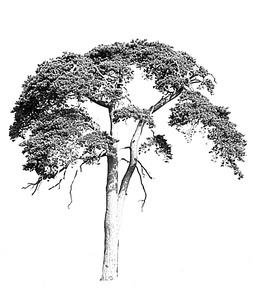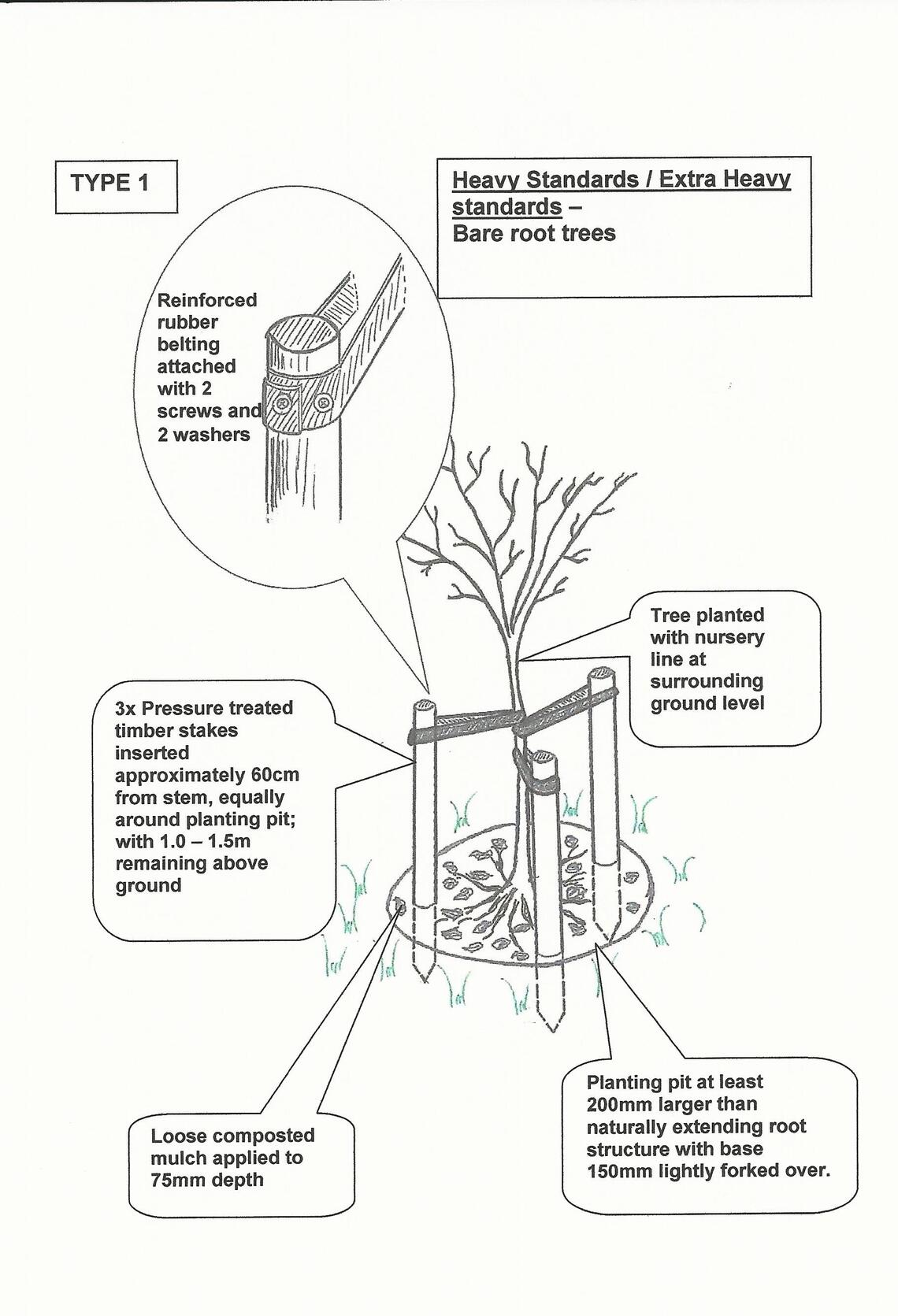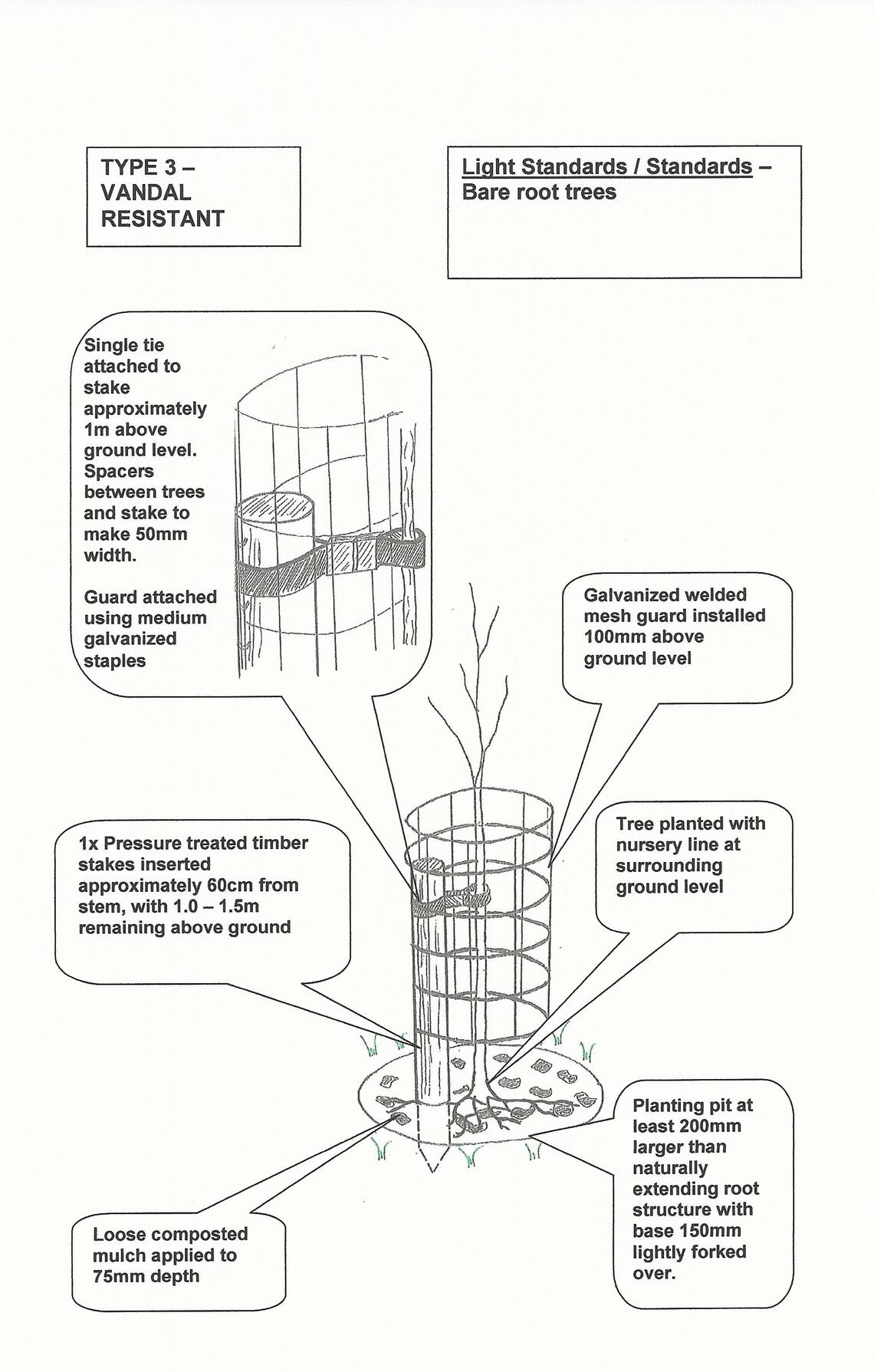The Much Wenlock Tree Forum acknowledges both David Woodhouse (previously Arboricultural Officer, Shropshire Council) and The Garden, Royal Horticultural Society, September 2014 for the following advice;
Planting specification
Traditionally trees are planted during their dormant season between November and March, but container grown trees can be planted at anytime.
A round hole may be dug on lighter soils but on heavier soils it is better to dig a square hole, roots can find corners to break out of square holes but in clay can girdle in a round hole. Make the hole three times the width of the roots and spike the bottom and the sides of the hole to encourage drainage.
Position the tree so that the top of the roots is just below the surface of the soil, check the depth by offering the tree into the hole first before back filling.
The tree should be supported by stakes to a third of its height.
- Tree support
Metal grills and guards are highly expensive and require removal relatively quickly as the tree grows to come into contact with them. As such the draft design shows trees supported by 3x tantalised timber stakes and loops of rubber strapping. It is much cheaper, easy to install and remove and provides a good level of protection but allows trees to stabilise very quickly.
- Tree size
Tree sizes can be heavy standard 10-12cm girth and above, or light standard with a smaller girth.
The trees should meet the criteria set out by the Horticultural Trade Association for trees and shrubs
The trees should preferably be container grown. Other rooted forms of tree such as bare-root (no soil on the roots) or rootball (a scoop of soil and some of the roots) are considered less reliable and more vulnerable to failure through poor nursery extraction and / or subsequent handling. It is however, possible to obtain high quality trees in these forms from some nurseries.
- Watering
When planting any new tree it is extremely important to ensure that it is adequately watered during the summer months for at least the first two years. This is because the tree will have had only a limited chance to put down new roots into the surrounding area from which to absorb water. Creating a ‘dish’ of soil around the base of the tree will help prevent water from running off away from the tree.
- Standards – Watering of such trees is very important. Weekly watering during the drier summer months is really important. Water should be applied to the planting pit and should consist of approx 20 litres (5 gallons) of water applied to each tree in such a way that the water is able to percolate through the soil, avoiding any run-off. The frequency of watering should be at least every 14 days during dry periods.
- Mulching
To aid establishment and to also help maintain tree help it is important to ensure that after the tree has been planted an application of well-rotted woodchip mulch should be applied to the surface of the planting pit / area to a diameter of at least 1m in diameter and to a depth of 75mm. Care must be taken to not pile mulch against the bark of the newly planted tree. As time goes by this mulch will work its way into the soil and will help the tree resist drought and other impacts. This will however need topping up annually for at least the first 5 years. It is important that the mulch is not piled against the tree stem as this can cause the degradation of the tree bark and can lead to premature tree failure in the medium term.
Types of mulch
- Well-rotted compost – This can include a variety of materials usually mixed together. Commonly composted garden waste is used as it is the bi-product of the waste collection industry. Can sometimes contain Lime, which on a few trees can be problematic, but usually it is of benefit. Usually contains naturally occurring beneficial fungi (Mychrorriza) that help trees establish. This should be peat-free in nature.
- Well-rotted woodchip – This is a bi-product of the tree surgery industry and consists of woodchip and leaves that have been partially composted (at least 6 months). Very durable mulch, lasts well and encourages beneficial fungi (Mychrorriza) to grow.


